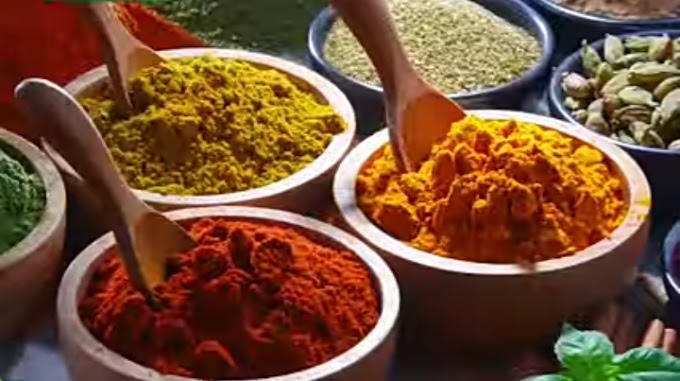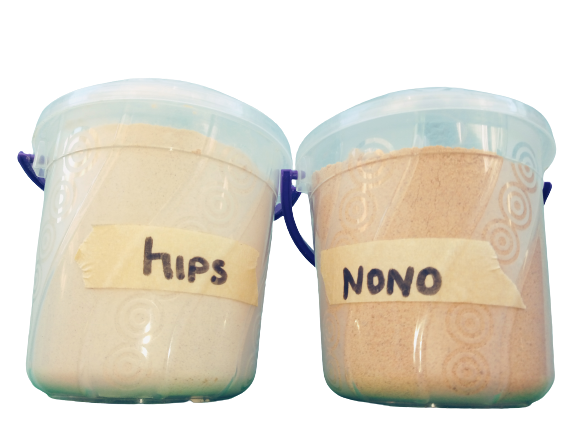BOTANICAL NAME
Hordeum Vulgare is the botanical name for barley, it is from the Poaceae family.
DESCRIPTION
Talbinah is actually a broth made from barley (Sha`eer). The broth is called Talbinah because it is thin and white, similar to milk.
Barley (the essence of Talbinah) is a rugged cereal grain from the grass family, it can grow up to 1 ½ to 4 feet tall and flourishes in cool climates.
It has not been established where exactly barley originated from however it has been traced back to 7000BC Iran and 5000BC in the early Egyptian and Sumerian writings. Barley was part of the staple diet in ancient Egypt, in 5th century AD Tibet, and Medieval Europe. Known to the ancient Greeks, Romans and Chinese, it is from the most ancient of cultivated grains; it was the first domesticated grain in the Near East (current day Syria, Palestine, Israel, Lebanon) and has been used for centuries in dishes ranging from bread, soup and cereal.
The most common forms of barley found today are: Hulled barley where only the outer husk is removed, Scotch barley where the grain is husked and coarsely ground, barley grits where the grain is hulled and cracked into medium course pieces, and Pearl barley where the bran is removed, steamed and polished. The most nutritious and beneficial of these is the hulled barley as the other forms lose a lot of their nutritional value through the different processing they go through. Pearl barley is more commercial and widely available unlike the other forms which can mainly be found in health food stores.
EVIDENCE
Talbinah has been mentioned in many narrations of the Prophet [peace be upon him] such as the narration of Aisha that when someone from her relatives died, the women would gather for that (reason) then they would disperse except her family, she would order an earthenware pot of talbinah be cooked, then tharid (a dish made form meat and bread) would be made and the talbinah poured over it. Then she (Aisha) would say (to the women), ‘Eat from it for indeed I heard the Messenger of Allah [peace be upon him] say: “Talbinah is a relaxation for the heart of the sick person and it removes some of the sorrow”.’ [Bukhari 479/9, Book of Food, Chapter of Talbinah]
Aishah (may Allah be pleased with her) also said: the Messenger of Allah [peace be upon him] said:, “You must have what you find unpleasant but beneficial: the talbinah.” She further said – “whenever one of the family of the Messenger of Allah [peace be upon him] was troubled with sickness, the pot never left the fire until he reached one of two extremes.”, [Ibn Majah #3446] Ibn Qayyim explained this means until he or she recovered or died.
From the hadeeth of Umm Kulthum who heard Aisha (may Allah be pleased with her) saying, the Messenger of Allah [peace be upon him] said: “”You must have what you find unpleasant but beneficial (i.e. talbinah); by the One in Whose Hand is the soul of Muhammad, indeed it cleanses the stomach of one of you, just as one of you washes his face from dirt, with water.”[Sunan An Nisai Al Kubra, #7575 and Mustadrak Ala Saheehayn, by Abu Abdullah Muhammad ibn Abdullah al Haakim An-Naisaburi,Book of Food, #7531].
PARTS USED
It is more common that the barley grain is used; however, unknown to many people; the green barley leaves can be used too.
CONSTITUENTS
Barley consists of carbohydrates (55% starch, 15% fibre), Proteins (12%), lipids (3%) and Micronutrients (vitamins, minerals, flavonoids and anthocyanin). Amongst its vitamins and minerals are; B1 (Thiamine), B2(Riboflavin), B3 (Niacin), B5 (Pantothenic), B6, B9 (Folate), selenium, iron, magnesium, zinc, and phosphorus. It also contains calcium and potassium. Its constituents function as follows;
Phytochemicals – natural plant-based chemicals – may reduce the risk of diseases such as heart disease, diabetes and cancer.
Soluble fibre is effective in lowering blood cholesterol and can reduce the risk of heart disease. It is also beneficial in slowing the absorption of sugar and reducing the risk for developing type 2 or non-insulin-dependent diabetes.
Insoluble fibre is beneficial in helping the body maintain regular bowel function. It may also help lower the risk of certain cancers such as colon cancer.
Starch – has softening and absorbent properties.
Antioxidants – especially vitamin C and E protect cells from damage caused by unstable molecules called free radicals.
MEDICAL USES
Ibn Qayyim mentioned that talbinah has the same benefits of barley water but it is even better. He said that it has a cleansing action and provides subtle nourishment. The talbinah broth according to this great scholar and physician of Islam clears any bilious, phlegmy humours that collect in the stomach and puts it at rest.
In modern times many discoveries have been made about this prophetic remedy of barley. It is now known that the starch contained in barley is especially useful for its emollient (softener), absorbent, anti-inflammatory and antiseptic properties making it beneficial in smoothing the intestinal mucosa and highly recommended for stomach pain or irritation.
B Vitamins are involved in the development and maintenance of the nervous system; they produce brain chemicals that affect the mood and they are vital for mental and emotional well-being. Deficiency in B vitamins has been linked to depression. This may explain the saying of the Prophet [Symbol] that talbina removes some of the sorrow. Our body does not store B vitamins so they must be a part of our daily diet.
Barley is a high fibre, whole food and an excellent choice for type 2 diabetes sufferers or pre-diabetes. It contains many vitamins and minerals, in particular beta-glucan soluble fibre. Research shows that barley beta-glucan soluble fibre promotes healthy blood sugar by slowing glucose absorption. Published in the August 2007 edition of the Diabetes Research and Clinical Practice journal; a long-term study reported a 30-percent decrease in HbA1c (average blood glucose level) in type 2 diabetics who consumed a healthy diet including pearl barley that supplied 18 grams of soluble fibre a day.
The absorptive capacity of starch is useful in mild diarrhoea as it absorbs excess fluid in the stool thus stopping diarrhoea.
The U.S. FDA (Food and Drug Administration) made a press release in 2006 announcing that whole grain barley and barley-containing products are allowed to claim that they reduce the risk of coronary heart disease (CHD). This was based on the scientific research to support these claims.
Green barley grass is rich in vitamins A, C, B1, B2, and B12; folic acid, calcium, iron, and potassium. Unlike most plants, barley grass provides all nine essential amino acids – those which our body can’t produce. Green barley leaves contain a very high level of chlorophyll which acts as an antioxidant lowering free radicals, this can help prevent cancer.
Research carried out in the School of Medicine and health Sciences, George Washington University, Washington DC, by Allan L. Goldstein, Ph.D. (2010), – head of the biochemistry department – and his colleagues; indicated that an antioxidant called alpha-tocopherol succinate (a relative of vitamin E) may be the major factor of the plant’s anti-tumor action. Dr Goldstein and his team found that it seems to inhibit several types of cancer, including leukemia, brain tumors, and prostate cancer.
In Japan where green barley is popular; according to Yoshihide Hagiwara, M.D., researcher, founder and owner of the largest Pharmaceutical company in Japan, and author of the book “Green Barley Essence” (1986) – barley grass helps cure skin diseases and ulcers by promoting the growth of new cells. Certain antioxidants can act as a remedy for the skin; Vitamin C and Carotenoids which are both found in green barley grass are used to rejuvenate the mitrochondria in the skin cells for more youthful looking skin.
Green barley grass offers more protein than a sirloin steak, five times the amount of iron compared to spinach, seven times more vitamin C than orange juice, and 11 times more calcium than cow’s milk.
It is no wonder that barley is a super-food, it is one of the most beneficial forms of dietary fibre which promotes a healthy digestive tract. It Lowers blood cholesterol levels, prevents blood sugar levels from rising in people with diabetes and reduces the risk of cancer.
For the sake of brevity we have mentioned only a few medical uses for barley. Many current researches have been, and are being carried out on this amazing prophetic remedy which the Prophet Mohammed [Symbol] advised the Muslims with. There are even studies showing that barley can help in preventing breast cancer, Gallstone, childhood asthma and arthritis.
APPLICATIONS
There are many ways to utilise barley.
For sadness, depression or for general well-being – drink talbina until health is regained. To make talbina; add 1-2 tablespoons of 100% barley flour to a cup and a half of milk or water. Cook the mixture on a low heat for roughly 5-10minutes or until it reaches the consistency of broth, then drink. The talbina can be sweetened with honey for a better taste.
For sore throat – gargle with barley water.
For stomach ache – drink two to three glasses of barley water
For diarrhoea – drink two to three glasses of barley water.
For Diabetes, pre-Diabetes or constipation – Include barley as part of your regular diet. Drink talbina regularly, add some barley grains to your favourite stew, use barley grains as a rice substitute, or replace your normal bread with barley bread which was a part of the Prophet Muhammad’s [Symbol] diet. Eat barley flakes as a breakfast cereal, bake muffins or scones with barley flour, or even make a barley salad.
For Urinary Tract Infection – Drink barley water several times a day, it flushes out the toxins and clears the urine.
For help with cancer – make barley a regular part of your diet, in the form of talbina, barley water, and as a whole food in stews, bread meals etc. Deficiency in selenium can lead to cancers of the skin, stomach, colon and breast. Barley is a good source of selenium which improves the skins elasticity and prevents free radicals.
For constipation and anaemia – Mix green barley powder (start with 1/2 teaspoon once a day then increase to 2-3 teaspoons) with water or juice and drink it. (Green barley extract can be bought in powder or pill form in specialised stores. Please read the instruction carefully before taking any supplement.)
CAUTIONS
Though Barley is well tolerated the following cautions are to be taken.
Gluten allergy ––barley should be avoided by people with celiac disease and gluten intolerance.
Type two Diabetics who take drugs to lower blood sugar may need to exercise some caution until the proper dosage is established.
RECIPE FOR BARLEY WATER
8 cups of water
1 cup of barley
2 lemons (optional)
¼ cup of honey (optional)
Place the barley and water in a pot, cover, and bring to a boil.
Decrease the heat and then let the barley simmer for 30 minutes.
Strain the barley water through a strainer and set the water aside in a jug. (Do not waste the barley as it can be used as a rice substitute in a stir fry or a risotto dish.)
Chill the barley water before drinking.
For added flavour, (especially if you want to give barley water to the children) add the juice of two lemons and some honey to the barley water, stir well and then serve.
References:
Health Benefits of Barley by Joan Marie Conway, PhD, RD ( Research carried out for the USDA Agricultural Research Service)








0 Comments